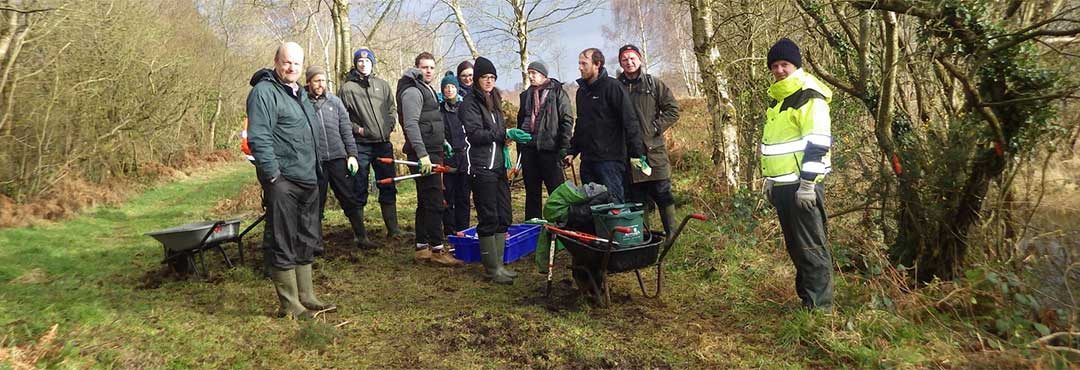Latin name: Lutra lutra
Family: Mustelidae
Description of the Otter
The otter is the only otter native to the UK. They occur throughout Northern Ireland in both freshwater and coastal habitats.
Otters have a long, slim body with a powerful tail which they use when swimming. This is one of the many features they have which is suited to a life in and around water. These include webbed feet and the ability to close their nostrils and ears when under water. Their eyes are high on their head so they can still see even when most of their body is submerged underwater.
They have two types of fur, a course outer coat which is waterproof and a warm inner layer to protect them from the cold. Their fur is chestnut brown with lighter fur on their bellies. They have a powerful jaw and use their whiskers underwater to detect prey. They are really good swimmers and can hold their breath underwater for about 20 seconds.
Adult otters are solitary animals except during mating and for a short time after the cubs are born. They live in a burrow called a ‘holt’ and usually rest during the day with most activity at dusk and during the night.
Otters use a whistling noise to communicate with each other, young otters in particular make this noise when they are having fun. They can also communicate using spraint (droppings). The scent of the droppings is thought to convey information about the otters, such as age and sex, information which can be used by other otters. They eat mainly fish but will also eat crustaceans, water birds, frogs and voles.
Otters can breed all year round, although it is more common for otter cubs to be born in either spring or autumn. They weight around 40g and their eyes are closed at birth. It will be about 10 weeks before they leave the holt and up to 16 weeks before they learn to swim. Young otters stay with their mother for approximately 15 months, after this time they move into new areas to find their own territory. Finding a new territory with a good supply of food can be a difficult time for the young otter.
Otters have a life span of around 5 years.
Size
Otters are about 90cm long and with the tail more than 1.3m. The shoulder height is between 25 and 30cm. The weight of the body of an adult Otter could be as much as 12kg.
Historical Info
Otters were once widespread throughout the UK. However, since the 1960s they have declined mainly due to increased levels of pollution in our rivers and a reduction in fish numbers. During Medieval times otters were hunted for sport and in the 19th century the skin was extensively used for hats, collars and coats. The otter had disappeared completely from some areas of England. However the good news is that their numbers are growing again and they are starting to repopulate some areas. Otters have survived in Northern Ireland although their numbers had declined over the years.
A survey of otters carried out for Environment and Heritage Service (now Northern Ireland Environment Agency) in 2001 and 2002 showed that the otter population here is in a healthy condition and is considered a stronghold for the species.
The Otter’s Habitat
Otters live on the banks of rivers, lakes and sea coasts, as long as they have access to freshwater pools to clean their fur. An otter home is called a holt and an ideal spot for a holt is under the roots of old riverbank trees.Their waterside home range can be as long as 40km and they mark their territory with spraint (droppings) to maintain contact with their neighbours. They will also rest above ground in thick vegetation, in areas called couches.
Diet
Otters eat what they can easily catch. Most of its prey are fish, which may be small, slow or weakened. In this way the otters play a role in maintaining the health of the fish stock. Other animals like frogs, crayfish, ducks, water rats and black coots may be occasionally taken by otters.
Threats to the Otter
In the 1950s and 1960s, the increase in factories and housing led to more pollution and fewer fish so there was a sharp decline in otter numbers. Pesticides and other chemicals had polluted the river systems causing the otters to become ill and unable to hunt. The increase in road and house building has destroyed or disturbed the otter’s habitat and, recently, an increasing number of otters are being killed on our roads as they cross from one river system to another.
Otters living at the coast are still at risk from possible oil spills.

